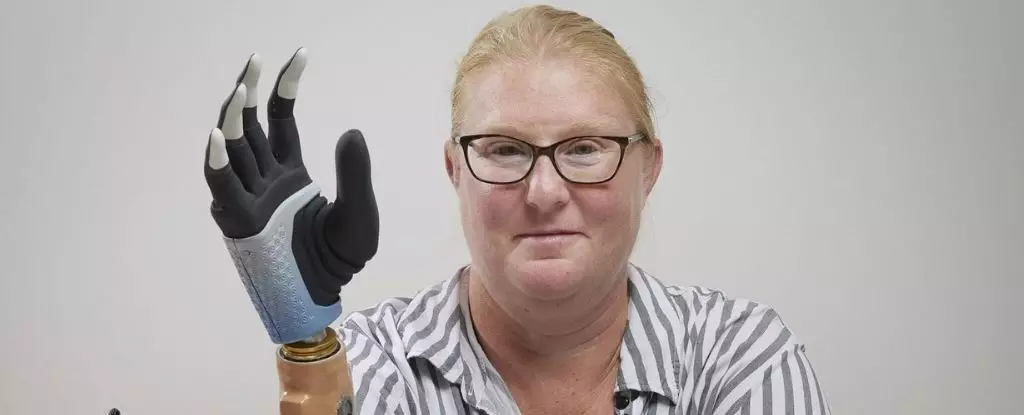Imagine living without a hand for two decades, carrying on with daily activities but forever feeling the void left behind. This was the reality for Karin, a 50-year-old Swedish woman who lost her hand in a farming accident. However, a remarkable breakthrough has brought about a transformation in her life. Karin has become the recipient of a cutting-edge bionic hand that has revolutionized prosthetic technology. This human-machine interface, based on innovative AI and advanced connectivity, has allowed Karin to regain a limited sense of touch and control over her movements.
After being fitted with the bionic hand, Karin’s life has taken a new direction. Tasks that were once challenging or impossible have now become achievable. With a success rate of 95 percent, she can individually move all five bionic fingers, enabling her to carry out 80 percent of her usual daily activities. Simple yet essential tasks like preparing food, picking up objects, zipping or unzipping clothes or bags, and turning door knobs or screws are no longer obstacles. The bionic hand has not only provided Karin with physical capabilities but also a significant reduction in her excruciating phantom pain, previously likened to her hand going through a meat grinder.
A Groundbreaking Advancement in Prosthetic Technology
The research team behind the bionic hand has recently shared Karin’s extraordinary success in the prestigious journal Science Robotics. Comprising engineers from Sweden, Italy, and Australia, this international collaboration has achieved a remarkable feat. For the first time, a robotic hand with integrated internal electrodes has demonstrated long-term viability for amputations below the elbow. Max Ortiz Catalán, a robotics engineer leading the research at the Bionics Institute in Melbourne, Australia, and the Center for Bionics and Pain Research in Sweden, expressed his enthusiasm, stating that Karin’s ability to comfortably and effectively use the prosthesis in daily activities for years is a promising testament to the life-changing potential of this groundbreaking technology.
The key to the bionic hand’s success lies in the concept of osseointegration. This cutting-edge solution involves the insertion of an implant into the patient’s bone, enabling the bone cells to grow tightly around it. By directly attaching the artificial limb to the skeleton, biological integration with electronic components becomes possible. Over the past decade, Ortiz Catalán has been focusing on refining this technique to create a more effective interface for prosthetics. In Karin’s case, two implants were strategically placed in her ulna and radius bones, which were then connected to a muscle graft from her leg. These muscle grafts, containing embedded electrodes, provided a vital link for reattachment of the severed muscles and nerves in Karin’s arm.
Compared to traditional ball-and-socket prostheses, the bionic hand offers exceptional comfort to patients. By directly anchoring the prosthesis to bone, researchers have eliminated the discomfort associated with conventional models. Furthermore, the sensory electrodes embedded within the robotic hand provide a consistent and reliable perception of direct neural stimulation. This unique design greatly enhances grip precision, improving Karin’s abilities by nearly four-fold. The development of this advancement, named Mia Hand, was carried out by the Italian company Prensilia, a leader in robotic and biomedical devices. The project received funding from the European Commission.
The success achieved by Professor Ortiz Catalán and his collaborators has sparked enthusiasm at the Bionics Institute. The ongoing development of next-generation bionic limb technology, coupled with its potential to provide relief for phantom limb pain, holds immense promise. Robert Klupacs, the institute’s CEO, expresses his excitement at the progress achieved to date. Ortiz Catalán has further extended his expertise to Ukraine, where he is providing support and knowledge to amputees affected by the ongoing war.
The extraordinary journey of Karin and her transformative experience with the bionic hand serves as a testament to human ingenuity and perseverance. This revolutionary breakthrough in prosthetic technology has not only restored Karin’s physical capabilities but has also significantly improved her overall quality of life. With the continuous advancement of this groundbreaking technology, there is hope for a future where limb loss will no longer be a barrier to leading a fulfilling life.



Leave a Reply